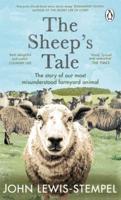Publisher's Synopsis
Drawing on unique longitudinal community-level data in Brisbane, this book entwines current ecological theories of crime with key debates on the relevance of 'community' in contemporary urban life to examine the spatial and temporal relationships between community structure, community social capital, informal social control and the occurrence of crime and disorder.
Crime and Disorder in Community Context extends what is known about the concentration of crime in particular types of places, presenting a broad reaching explication of how community structural characteristics, community regulatory processes and crime influence each other over time. It looks at how growing levels of ethnic diversity, income inequality and increasing immigrant concentrations at the community level influence processes necessary for the regulation of crime; the crime control processes for various crime problems in different types of communities; the extent that exogenous shocks, like the 2011 Brisbane flood disaster and the global financial crisis impact on crime, crime prevention and crime control; and engages readers with the methodological complexities associated with the longitudinal study of crime and disorder in contemporary urban communities.
An accessible and compelling read, this will appeal to students and scholars of criminology, sociology, geography, cultural studies and all those interested in the relationship between crime and community.










